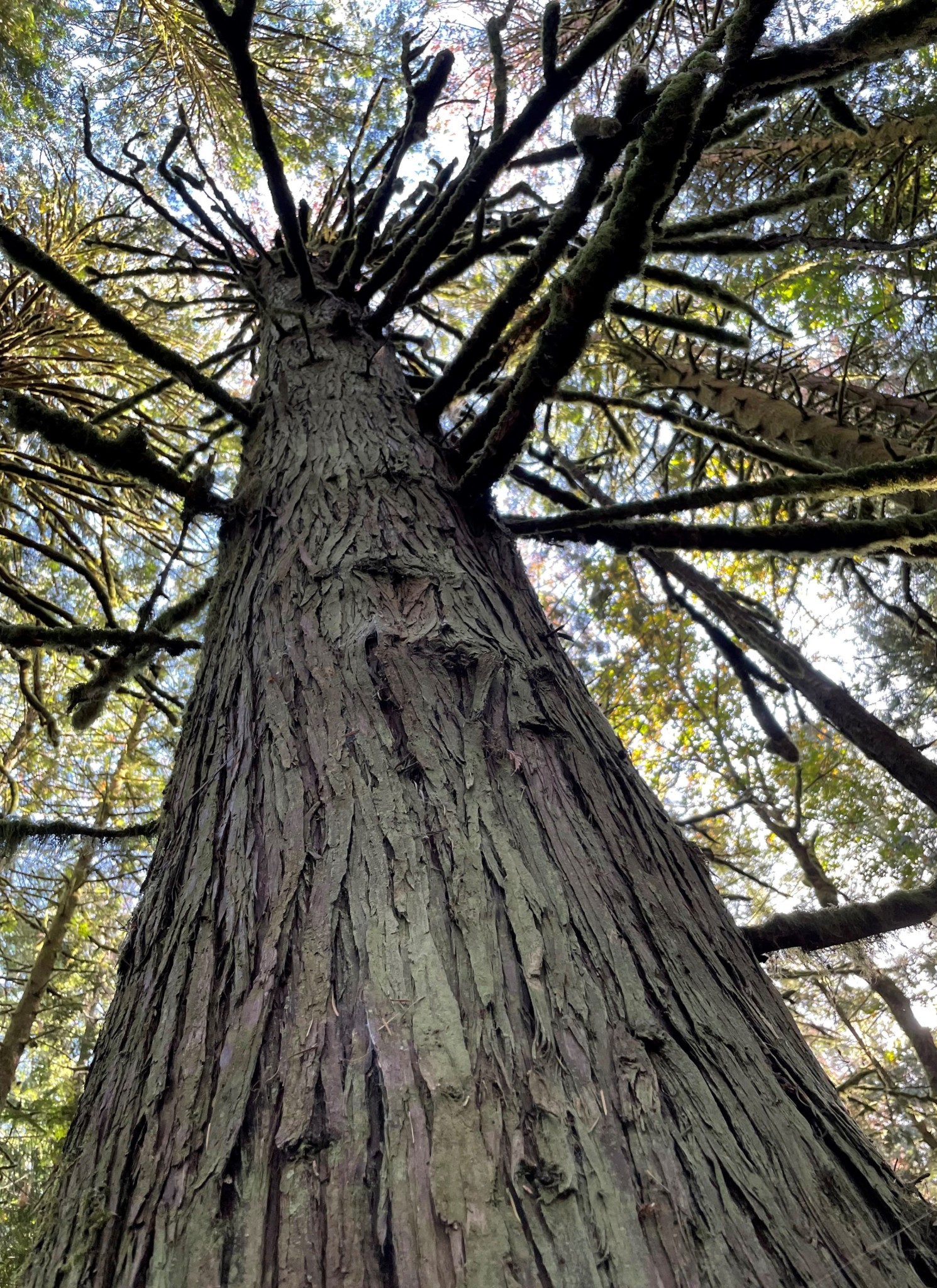In an October with a perpetual burn ban, we’re finding out. Singing songs around a fire pit full of Christmas lights is fun, but it really isn’t the same.
I am sitting in a beautiful piece of forest that I am lucky to work and love in half of the year. Around me, the sound of my students’ laughter and bird calls fill the air. Big leaf maple leaves flutter to the ground. It’s so green out here, and it is lovely.
But I can’t look too close without my heart aching. It’s October 11, and we are still waiting on our first big rain. The stream beds are dry, the moss is so parched it falls off of the trees at the barest touch. The maple leaves should be the only gold I see out here, but I am greeted by dry earth, dry moss, and a golden sun.
And if I look even closer, it’s the absences that pop out to me. There are no mushrooms yet this fall. None. This forest is normally full of lobster tail, boletes of all kinds, oyster mushrooms, funghi of all sorts from as small as the nail of my pinky, to as large as my head. Without the rain, the funghi cannot fruit. And if they don’t make their appearances before a freeze, they may not come up at all this year. And the nurse logs are hard and barren. They too cannot support life without the rain.
I took a moment today to lie on the ground and look up. It was supposed to be a moment of peace, of letting myself relax in a place I feel truly at home in. But it was all wrong, it was all wrong. The forest floor crunched underneath me. There was no shpoosh sound as the moss released its water. And looking up, looking up the canopy is empty. Because as we heat up, without the rain, the bark beetles flourish. And the cedars die. Our mother cedars, that emblematic tree of the Pacific Northwest, our very own trees of life are dying. Their shallow root systems cannot compete with the maples and they dry out in our sandy soil, making them a haven for insects. Our cedars are dying, and I wonder how our forests, and the animals, human and nonhuman alike, can go on without them.
I talk about these things with my students. I encourage them to find hope in the actions we can take, in the things that are flourishing. I find hope in their eager faces. In how much they love a place they have only just begun to know. I find hope in the cedars that are still alive, draped in moss. I find hope in the single patch of ink caps I found in a hollow of tree roots last week. But my heart also breaks for this place, and all we already have failed to save.
This too is what the climate emergency looks like, and feels like.

